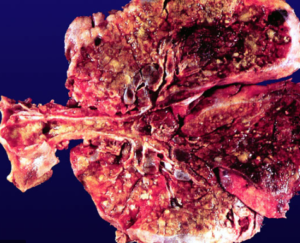Cystic fibrosis: CFTR-gene editing may cure this genetic disease

Last Updated on August 13, 2019 by Joseph Gut – thasso
August 13, 2019 – A very significant research article by the title “Allele specific repair of splicing mutations in cystic fibrosis through AsCas12a genome editing” has just appeared in the open access Journal Nature Communications. This work provide hope to patients with cystic fibrosis (CF) that in the nearer future CF may be curable, not only treatable.

But first things first. Cystic fibrosis (CF) is a lethal autosomal recessive inherited disorder with an approximate frequency of 1 in 2500 births. CF is linked to mutations in the cystic fibrosis transmembrane conductance regulator (CFTR) gene, which encodes a chloride/bicarbonate channel expressed in the apical membrane of epithelial cells. The lack of ion conductance across the membrane of these cells leads to impaired ion and liquid homeostasis, generating a multi-organ disorder. The primary cause of mortality in CF patients is bacterial infections of the airways, provoking chronic lung disease and ultimately respiratory failure. Current CF treatments are not curative and limited to the reduction of clinical symptoms including intestinal-airway blockages and chronic bacterial infections. Recent therapeutic advances were obtained in CF treatments through the development of CFTR correctors and potentiators, which however target exclusively few types of mutations including the highly recurrent CFTRΔF508.
In search for a cure for CF, several gene therapy approaches have been explored, mostly based on CFTR cDNA gene addition through viral or non-viral vectors. Despite promising results obtained in the respiratory tract of animal models, and advancements in gene therapy clinical trials, curative goals were hampered mainly by low expression levels of the delivered CFTR.
In contrast to these classical gene addition strategies just mentioned, the correction of disease-causing mutated CFTR holds the promise to restore physiological levels of CFTR expression and function, i.e. leading to a true cure of the disease. Thus, recent advances in genome editing techniques, with the development of precise and efficient CRISPR-nucleases, have accelerated the progress of gene correction for genetic diseases, which may include CF. Following initial discovery of the Streptococcus pyogenes Cas9 (SpCas9), several additional CRISPR-nucleases have been discovered with different functional, mechanistic and structural features, expanding the genome editing tool-box. Among these, AsCas12a has been widely used for its natural very high specificity.

